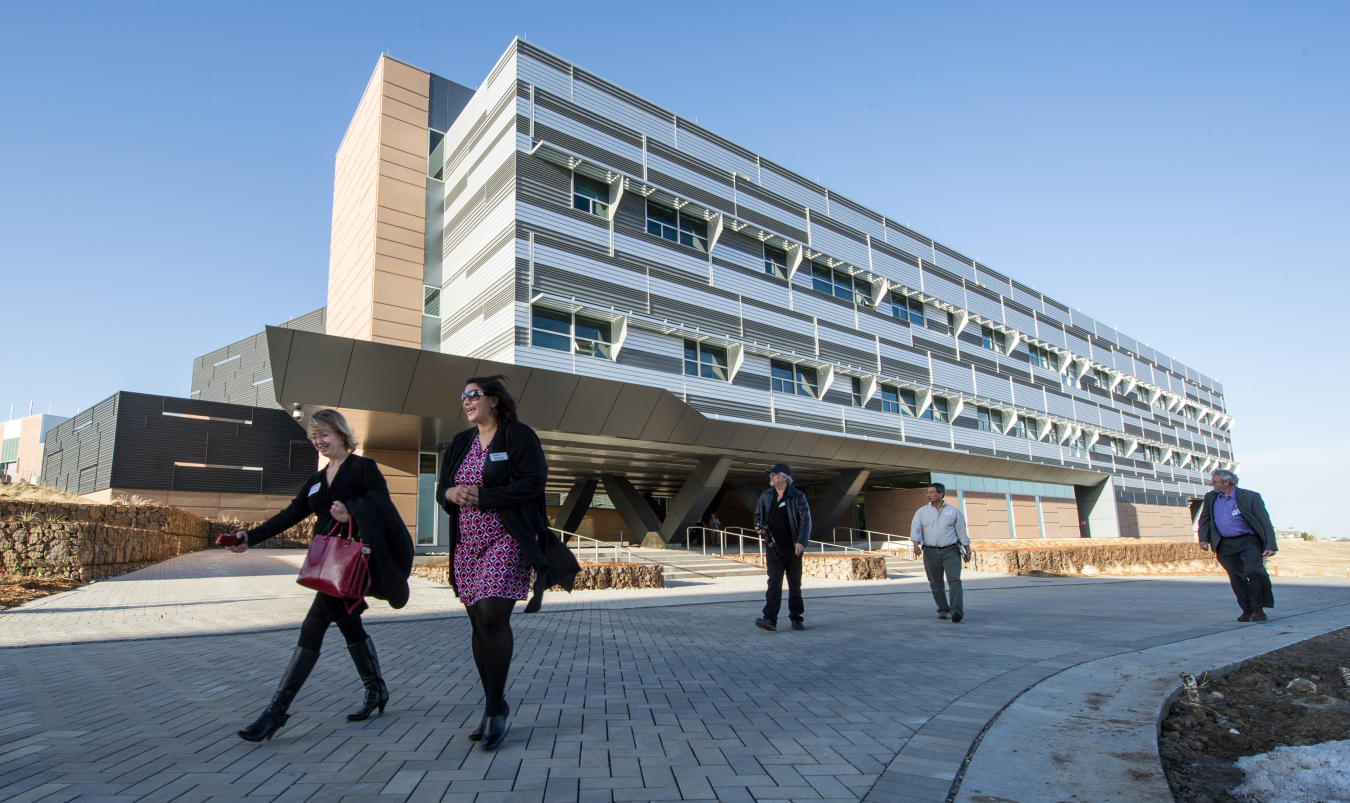
The Energy Systems Integrations Facility at National Renewable Energy Laboratory in Golden, Colorado has received a LEED® (Leadership in Energy and Environmental Design) Platinum designation for new construction by the U.S. Green Building Council.
The Energy Systems Integrations Facility (ESIF) at the Energy Department’s National Renewable Energy Laboratory (NREL) in Golden, Colorado is one of the most unique scientific research laboratories in the world. The 182,500-square-foot user facility is America’s first to help both public and private sector researchers demonstrate how clean energy technologies interact with each other and the grid at a utility-scale. This allows major changes in energy systems to be implemented and explored without risking the national infrastructure. The facility houses 15 experimental laboratories and several outdoor test beds, including an interactive hardware-in-the-loop system that lets researchers and manufacturers demonstrate their products at full power and real grid load levels up to 1 megawatt in scale. It now has something else which is very unique – the building received a LEED® (Leadership in Energy and Environmental Design) Platinum designation for new construction by the U.S. Green Building Council.
LEED® is a rating system intended to help building owners and operators become more environmentally responsible and efficient with resources. Started in 1998, the program has been applied to thousands of projects in the nation and around the world. ESIF achieved all 56 LEED® points and the facility is 40 percent more energy efficient than the baseline building performance rating per ASHRAE/IESNA Standard 90.1-2004.
Some of the features which helped the ESIF attain the LEED Platinum status include natural light that enters through 15-foot long skylights and operable windows that enable natural cooling and ventilation. The facility also features a high-performance computing (HPC) data center designed to be one of the most energy-efficient data centers in the world due to the use of an innovative warm-water liquid cooling system. The heat for the high bay laboratories in the building is provided by offsetting waste heat from the data center. Finally, 78 percent of waste during construction of the ESIF was recycled or reused, while 27 percent of the facility is comprised of recycled materials.
The ESIF showcases the Energy Department’s commitment to long-term sustainability and advancing renewable energy and energy efficiency research at NREL. It is also the fifth facility on the campus to achieve a LEED® Platinum designation. Along with being the Energy Department’s centerpiece to adding safe and reliable renewable energy sources to the grid, the ESIF serves as a role model facility for other laboratories.
About ESIF
- 182,500-square-foot building houses research to overcome challenges related to the interconnection of distributed energy systems and the integration of renewable energy technologies into the electricity grid
- Provides laboratory and office space for approximately 200 researchers and support staff
- Specialized hardware at the facility enables researchers and manufacturers to conduct integration tests at full power
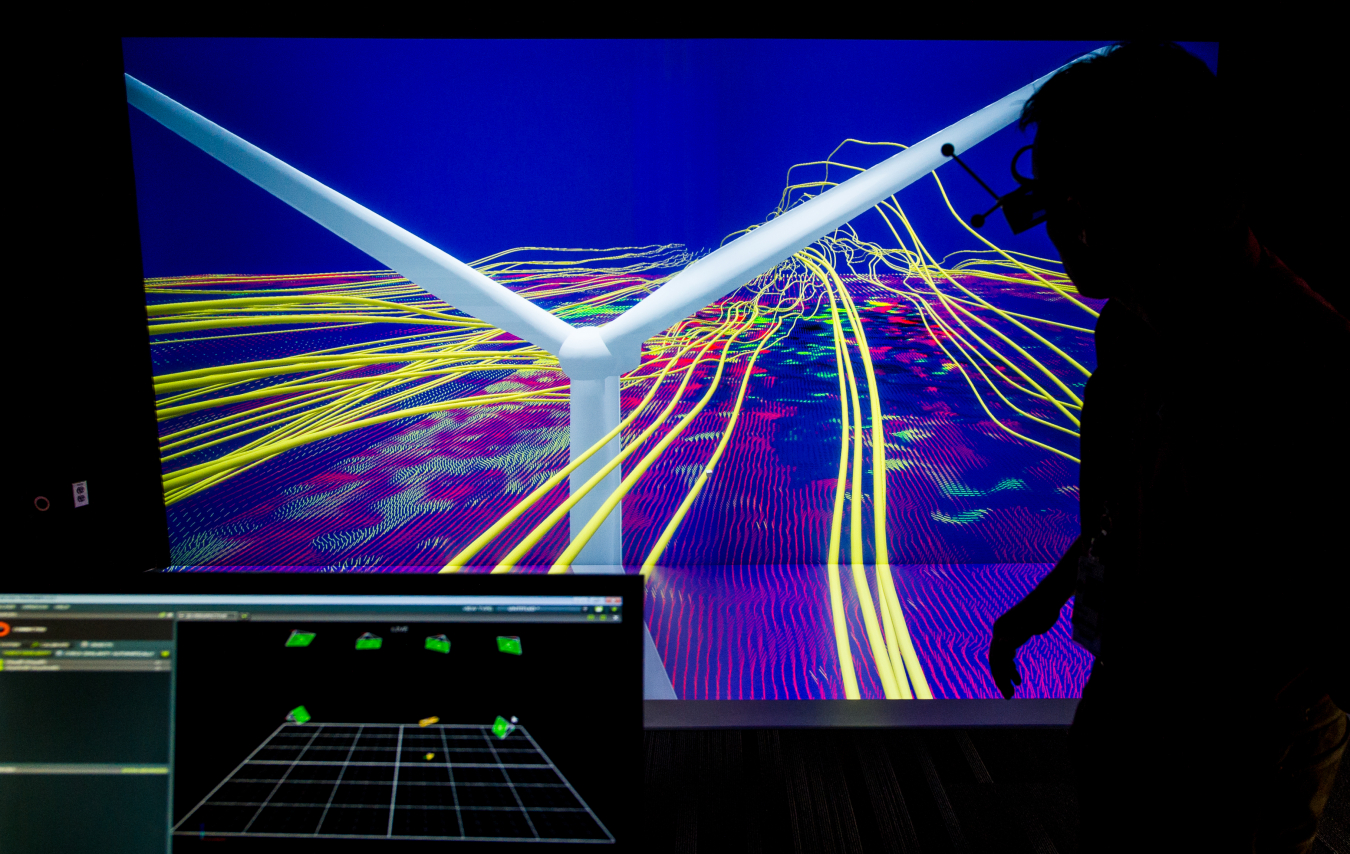
National Renewable Energy Laboratory Senior Scientist Kenny Gruchalla examines the velocity field from from a wind turbine simulation using a 3D model at the Energy Systems Integration Facility. | Photo by Dennis Schroeder, NREL
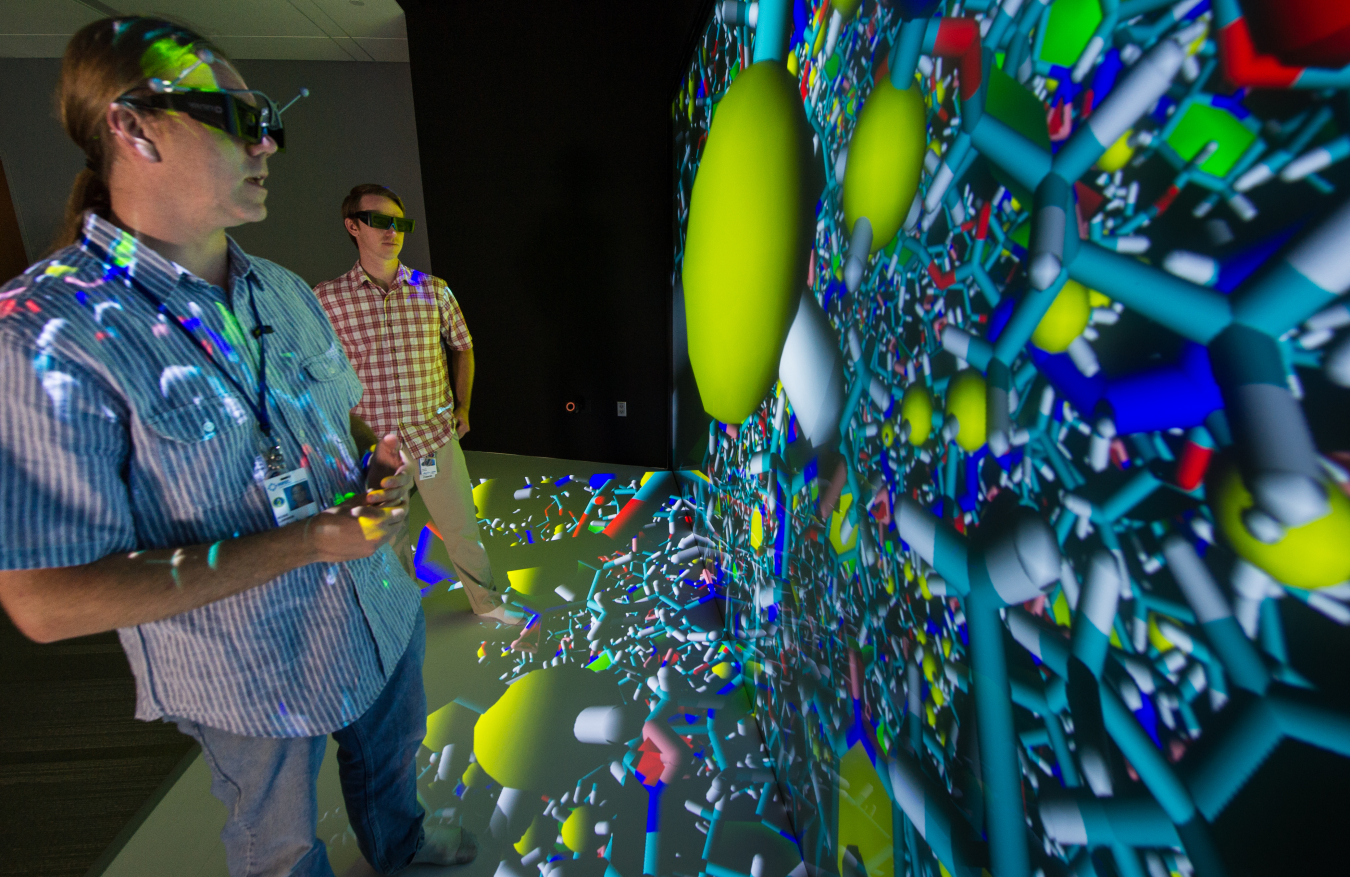
National Renewable Energy Laboratory Senior Scientists Ross Larsen (left) and Travis Kemper examine a molecular model at the Energy Systems Integration Facility. | Photo by Dennis Schroeder, National Renewable Energy Laboratory
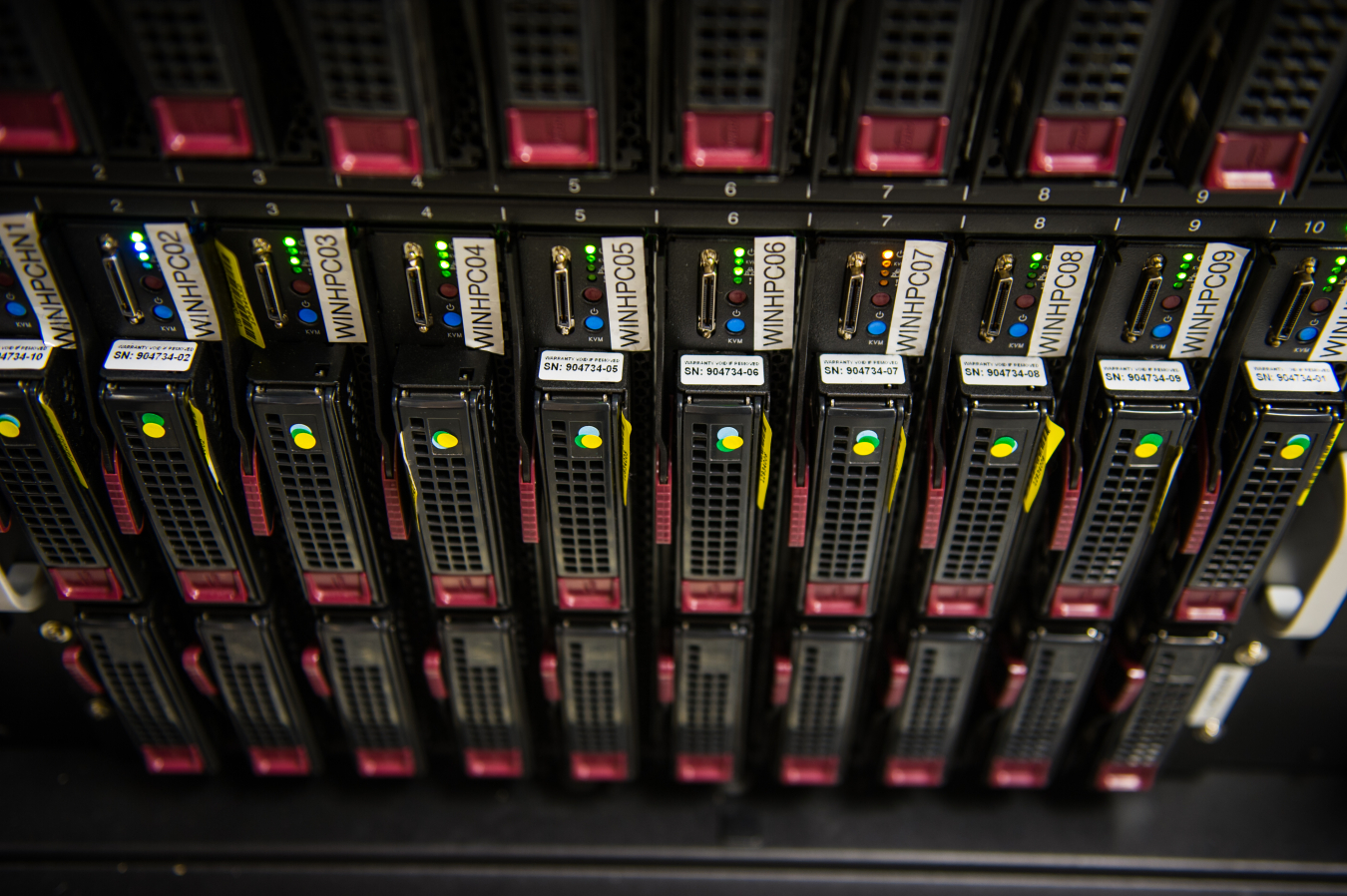
Computer racks in the high performance computing data center at the Energy Systems Integration Facility. | Photo by Dennis Schroeder, National Renewable Energy Laboratory
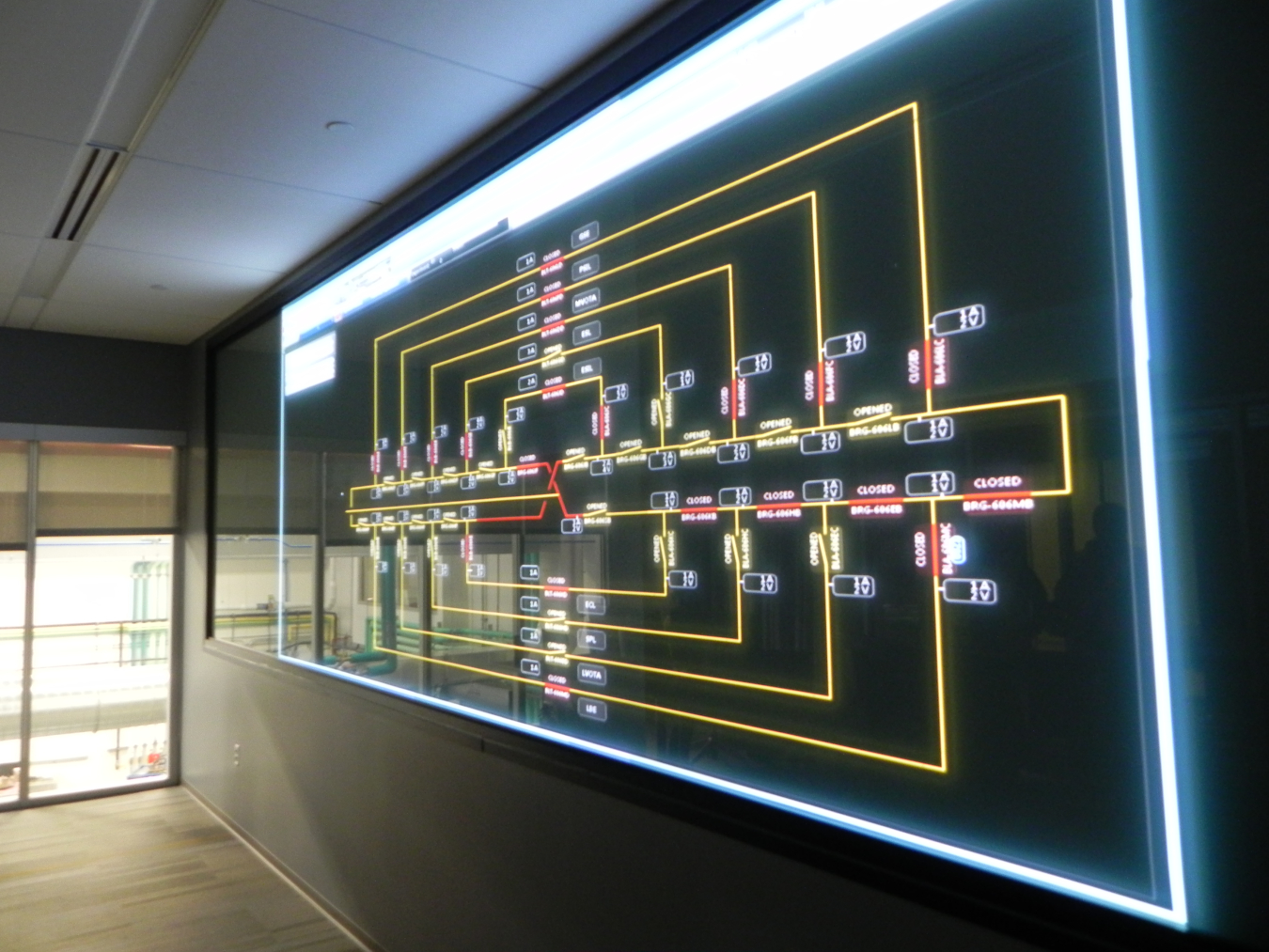
The Supervisory Control and Data Acquisition system at the Energy Systems Integration Facility provides high-resolution data output from experiments. | Photo by Kim Adams, National Renewable Energy Laboratory
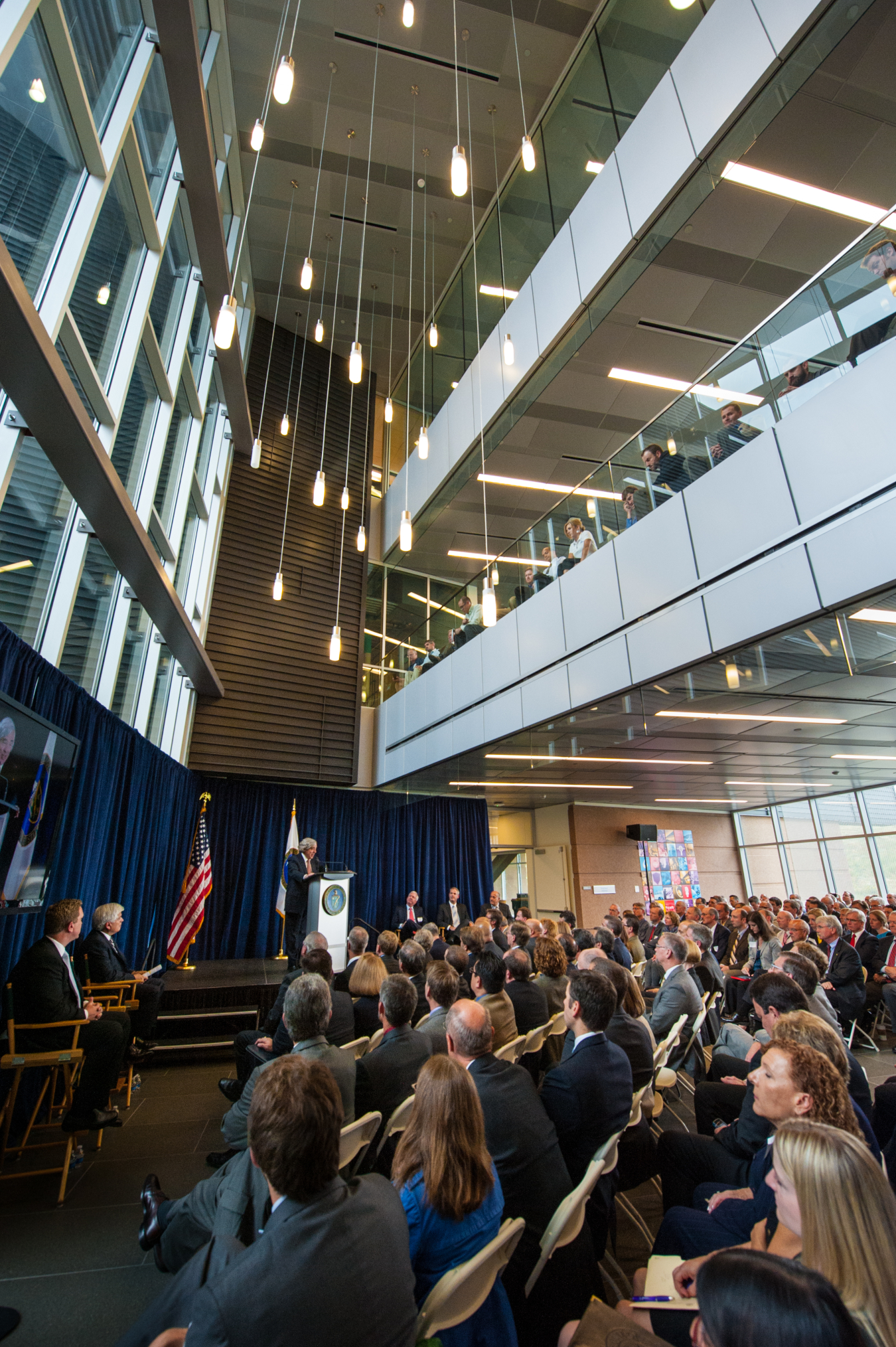
Department of Energy Secretary Ernest Moniz speaks at the dedication ceremony for the Energy Systems Integration Facility in September. | Photo by Dennis Schroeder, National Renewable Energy Laboratory
